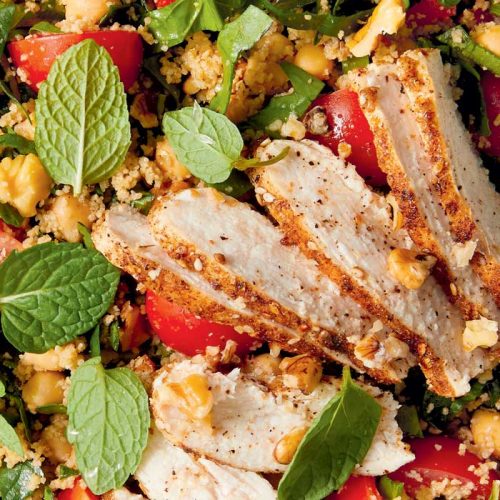
Health reporter Catherine Milford talks to mental health dietitians Brad Brosnan and Moyra Benson about easy ways to optimise nutrition when you’re feeling low.
It can be much easier to eat well when everything’s going right. But what about those days when things aren’t looking so rosy? When we are depressed, anxious or our mood is low, preparing and even eating healthy food can seem like too much of a challenge.
Some of the common symptoms of depression are strong feelings of tiredness, fatigue or a lack of energy, which can make it really hard for people in the grips of the illness to make sure they’re getting proper nutrition. And feelings of shame or worthlessness can compound the problem when people don’t feel they deserve to take good care of themselves.
The prevalence of mental illness
In New Zealand, about one in five people had a diagnosable mental illness in the past 12 months, and many more will need help to manage their mental health at some stage in their lives. Over the past two years, the proportion of people with a diagnosed mental health issue seen by their primary health carer increased to 22 per cent. Whether this is because mental illness is on the rise or because awareness is growing, making it more likely for people to seek help, is yet to be untangled. But we do know one of the most common mental illnesses, depression, is predicted to become the leading cause of disease burden in the world by 2030.
Treatment for depression can include therapy, medication or a combination of both. Health professionals also encourage people to exercise regularly, practise good sleep hygiene and eat a balanced, healthy diet to help stave off future bouts of the illness by supporting physical health and wellbeing.
Food and mood
Iron, B12, magnesium and omega-3 deficiencies have all been associated with increased depressive symptoms by researchers.
Three recent studies show that people who eat a diet rich in vegetables and fruit, and including meat, fish and whole grains, have lower odds of suffering major or chronic depression and anxiety disorders than those who consume a typical ‘Western diet’ high in processed or fried foods, refined grains and sugary foods. In one Australian trial for adults with major depression (the SMILES trial), participants found following a Mediterranean-style dietary pattern for 12 weeks significantly reduced levels of depression and anxiety.
Brad Brosnan, from Feel Fresh Nutrition, is a dietitian specialising in mental health who is interested in the relationship between food and mental health.
“The effect of food on mood has been known for some time, although scientific confirmation that feelings affect how and what we choose to eat has only happened relatively recently,” Mr Brosnan says.
Stress, social pressure and feeling lonely or sad can interfere with our ability to make the best food choices for our health. Then, if we feel bad about what we have eaten, that can contribute to the problem further, he says.
The following servings, used in the SMILES trial, were shown to improve symptoms of depression and anxiety:
- whole grains (5-8 per day)
- vegetables (6 per day)
- fruit (3 per day)
- legumes (3-4 per week)
- low-fat, unsweetened dairy(2-3 per day)
- raw, unsalted nuts (1 per day)
- fish (twice per week)
- lean red meat (3-4 times per week)
- chicken (2-3 times per week)
- eggs (6 per week) olive oil (3 tablespoons per day)
More good news?
Participants spent just $118 per week, less than the average $146 per week the participants had been spending prior to the trial.
Getting what you need
There’s mounting evidence that good nutrition and mental health are connected, so how do you make sure you get what your body and brain need when you totally lack motivation?
Healthy Food Guide editor Jenny de Montalk shares some practical ideas to help make healthy eating as easy as possible until you get back on your feet.
1. Prepare ahead
Many people who live with mental illness know there will be times when you feel okay and times when you don’t. Use the good times to prepare for the harder times. While you have the energy, bulk cook and freeze meals, in separate containers, that can easily be thawed and heated. And buy ready meals such as packaged or canned soups and microwavable rice. Think of it as a gift to your future self. Along with providing nourishment, it’ll be a reminder you have times when you do have the energy and motivation to care about yourself enough to plan ahead and, in time, you’ll be that way again.
2. Don’t cook
Sometimes even the thought of reheating a meal can seem a stretch too far. For these situations, make sure you buy some food options that require no cooking. Think bagged salads and fruit and vegetables that can be enjoyed raw, such as carrots, snow peas, celery, capsicum, avocadoes and tomatoes. Keep some hummus, mayonnaise, sriracha, milk, yoghurt, cheese and sprouts in the fridge. And stock the pantry with wholegrain bread, wraps, nuts, cereal, muesli bars, bliss balls, nut butters and canned fish, fruit, rice pudding, legumes and beetroot. You can throw together a combination of these ingredients and get a pretty decent meal happening without even having to switch the oven on.
3. Shop online
When the idea of traipsing around the supermarket makes you feel like crawling back into bed, take the pressure off and do your shopping online. You can get fresh, healthy groceries delivered to your door with little effort through Countdown and selected New World stores. And if you’re up for a drive but can’t face the supermarket, you can order online and pick up your groceries packed and ready to go. There are also vege and meat box delivery companies available. If you can muster the energy to cook but just need the thinking done for you, food bag services are always an option. Just search online.
4. Chuck it in a blender
If you don’t have much appetite, smoothies and soups can be an easy way to get food down. Blend fruit, milk, nuts, oats and yoghurt for a satisfying liquid breakfast. Make a nourishing soup by cooking assorted chopped vegetables and lentils in water or reduced-salt stock till they’re tender. Blend, adding liquid to reach desired consistency, season, then return to the pot to reheat.
5. Crack open the crockpot
Apart from frying off onions and garlic to begin with, most slow cooker recipes involve plonking all ingredients in the slow cooker and leaving for several hours to do their thing – that’s it. They really do make life easier.
6. Love your leftovers
When you do manage to gather enough motivation to make a meal, make double. That way you can feed yourself the leftovers for the next day or two, or freeze them to use later.
7. Befriend the freezer
Frozen veges, dumplings, fish or chicken tenders are really handy for making a meal faster and easier and are perfectly nutritious. Keep a bag of frozen berries, too, which you can add to smoothies or eat with yoghurt or cereal.
8. Simple saviours
Omelettes, scrambled eggs or baked beans on toast with a bit of cheese can be really satisfying and ready in just minutes. Serve them with fresh tomatoes and a handful of baby spinach to boost the vege content.
Mental health support day on a plate
By mental health dietitian Moyra Benson
Breakfast options
- Weet-Bix or another high-fibre cereal with reduced-fat milk or a fortified dairy substitute and sliced banana or frozen berries
- Scrambled eggs on wholegrain toast. Add mushrooms and tomatoes or spinach for extra vegetable servings
- Smoothie made by blending milkor fortified dairy substitute, frozen
berries, oats, yoghurt, nut butter and banana.
Lunch options
- Fatty fish, such as tinned salmon, sardines or mackerel, with ready-made salad and half a pouch of brown basmati microwave rice
- Eggs on wholegrain toast followed by fresh fruit and probiotic yoghurt
- Canned legumes (chickpeas, black beans, lentils, kidney beans, etc,) with ready-made leafy green salad, cheese and sriracha in a wrap
- Shredded cooked chicken (buy a cooked chicken from the supermarket if you don’t feel like roasting it yourself) with salad or quick-cook frozen vegetables.
Dinner options
- Chicken and vegetable stir-fry made with a pouch of brown basmati or mixed grain microwave rice, frozen vegetables and leftover chicken
- Frozen crumbed fish (cooked) and ready-made coleslaw, with a dressing of mayonnaise and yoghurt, served with microwave rice or quinoa
- Canned mixed bean salad or edamame beans with baby spinach and toasted pumpkin seeds with grainy bread
- Heated soup pouch with a swirl of lite sour cream or yoghurt and grainy bread on the side. Look for soup with 300mg sodium or less per 100g.
Snack options
Almonds, cashews, pumpkin seeds, yoghurt, nuts, fruit and raw vegetable sticks are all good options. Keep caffeine intake to a minimum as it can increase anxiety and sleep problems, contributing to depressive symptoms.
Side effects of common medications
Antidepressants and other common medications may all affect appetite, thirst, digestion, absorption, excretion, weight and nutrient requirements in some way.
Common side effects of antidepressants include indigestion, diarrhoea and constipation, so discuss the medications you take and their side effects with your doctor or pharmacist so you can prepare for any changes in your feelings towards food.
What is sleep hygiene?
Sleep hygiene is a set of practices that make for a better night’s sleep. These include avoiding caffeine late in the day, limiting alcohol before bed, maintaining a regular sleep schedule, getting off the screen at least half an hour before bed, exercising regularly and keeping your bedroom quiet, dark and cool (around 16°-18°C).
www.healthyfood.com










